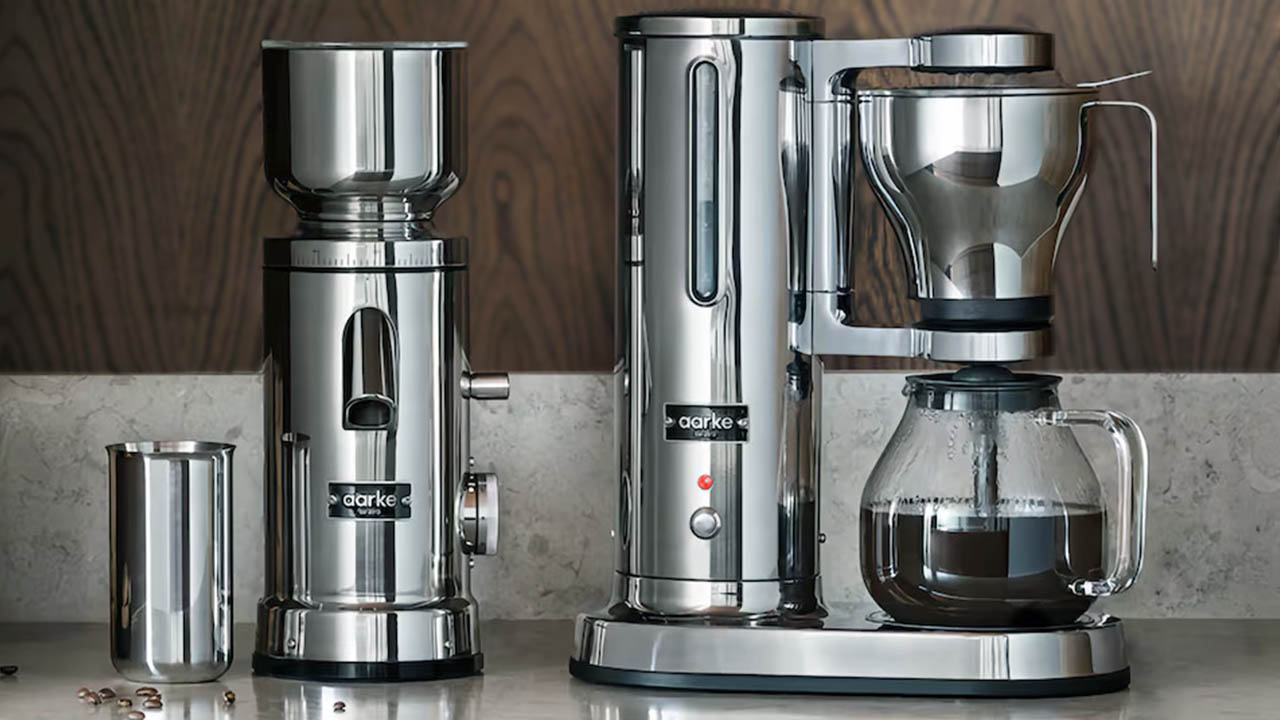DJI Flip Drone Review: The Perfect First All-in-One Vlog Camera Drone for Beginners
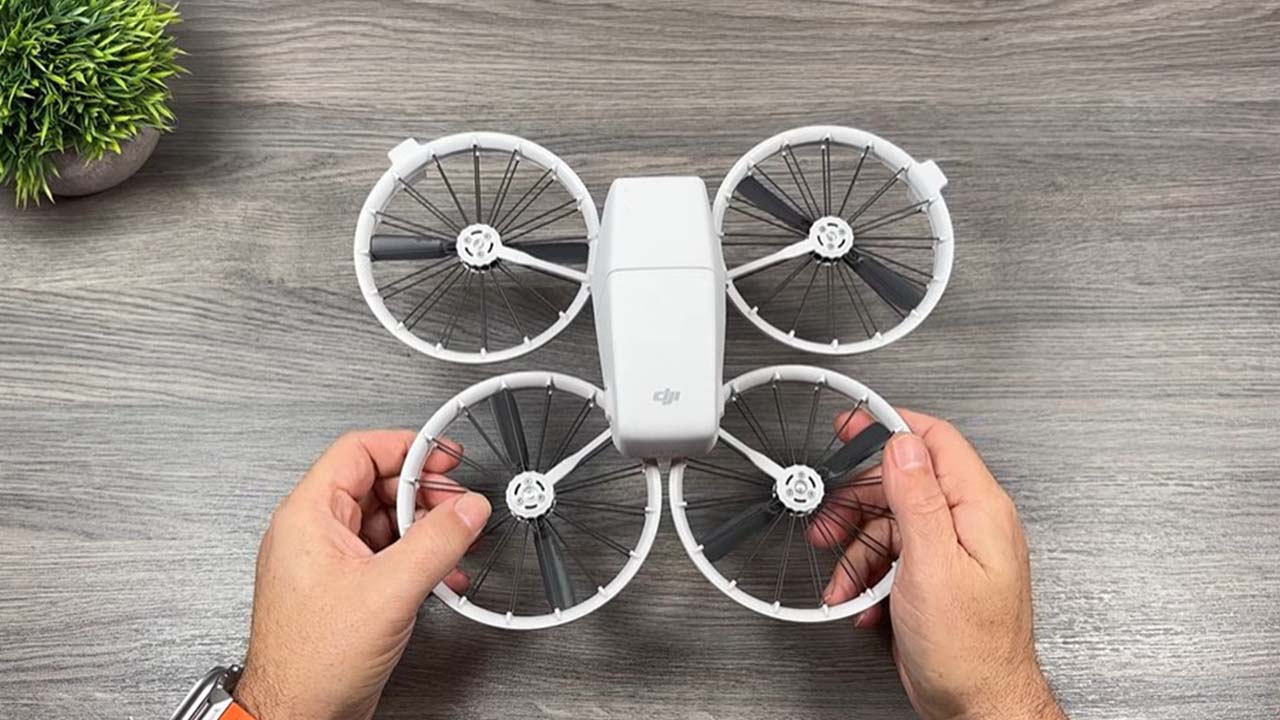
In true DJI fashion, the world’s leading drone manufacturer has once again amazed us with the release of the DJI Flip, a drone that feels both new and familiar at the same time. The Flip stands out with its innovative folding design, which replaces traditional propeller arms with four built-in propeller guards. This unique design is part of DJI’s safety-first approach, ensuring a more secure flying experience. While the propeller guards are functional, they give the drone a distinct look that some may find odd, especially when compared to other DJI drones.
When folded, the Flip resembles a futuristic spacecraft, almost straight out of a Star Wars movie. Once unfolded, its design feels like a blend between a cinewhoop FPV drone and a traditional camera drone. In terms of design and performance, the Flip positions itself somewhere between the DJI Neo, DJI Mini 4K and the DJI Mini 4 Pro. However, the Mini 4 Pro surpasses the Flip in several key areas, including photo and video quality as well as overall flight performance.
Despite these differences, the Flip is designed to be a beginner-friendly drone at a reasonable price point. It’s tailored to those new to drones but still offers strong camera functionality, including the ability to capture photos in both JPEG and raw formats. It can also shoot up to 60fps in 4K video, available in both Standard and D-Log M profiles, making it a solid choice for vlogging and casual filmmaking. The Flip’s versatility surpasses the Neo, offering subject-tracking capabilities and a variety of control options, making it ideal for those starting their drone journey.
While it may not match the Mini 4 Pro in performance, the DJI Flip provides a fantastic entry point for beginners seeking an affordable yet capable camera drone.
DJI Flip Drone: Release Date and Price
The DJI Flip was officially announced on January 14, 2025, and comes in three distinct kit options tailored to different needs and budgets. The standard DJI Flip kit, priced at $439 / £369 / AU$699, includes the drone, a DJI RC-N3 controller, one battery, a pair of spare propellers, and essential accessories—making it an affordable entry point for beginners.
For those seeking a more advanced setup, the DJI Flip kit with the DJI RC 2 smart controller is available at $639 / £549 / AU$949. This option provides enhanced control and a more streamlined experience for users who value convenience and smart functionality.
If you’re planning extended flights and want all the extras, the Fly More Bundle, priced at $779 / £659 / AU$1,159, is the most comprehensive choice. While it doesn’t feature the simpler RC-N3 controller, it includes the DJI RC 2 controller, two additional batteries, a four-battery charging hub, a shoulder bag, and two extra pairs of spare propellers. The Fly More Bundle offers great value for those looking to maximize flight time and convenience compared to the base kit.
DJI Flip: Specifications
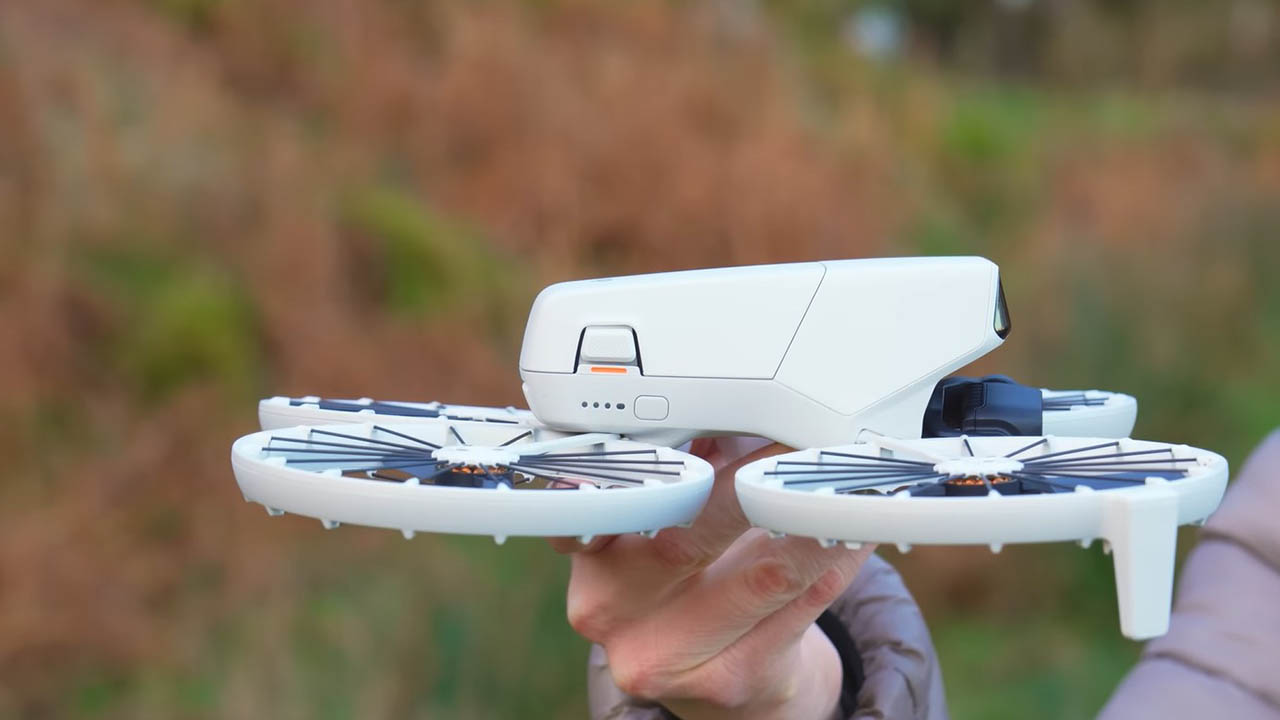
| Dimensions (Unfolded) | 233 × 280 × 79 mm |
| Dimensions (Folded) | 136 × 62 × 165 mm |
| Weight | 249 grams |
| Battery Life (Flight Time) | Approx. 31 mins |
| Range | 14 km |
| Max Wind Speed Resistance | 10.7 m/s (Level 5) |
| Built-in GPS | Yes, GPS + Galileo + BeiDou (No GLONASS) |
| Internal Storage | Yes, 2 GB |
| Sensor | 1/1.3-inch image sensor |
| Field of View (FOV) | 82.1 degrees |
| Max Photo Resolution | 12MP/48 MP |
| Max Video Resolution | 4K (3840 × 2160) @ 60fps (horizontal); 2.7K (1512 × 2688) @ 30fps (vertical) |
| Flight modes | Sport, Normal, Cine |
| Image Stabilisation | 3-axis mechanical gimbal (tilt, roll, pan) |
| Connectivity | WiFi |
DJI Flip: Design and Handling
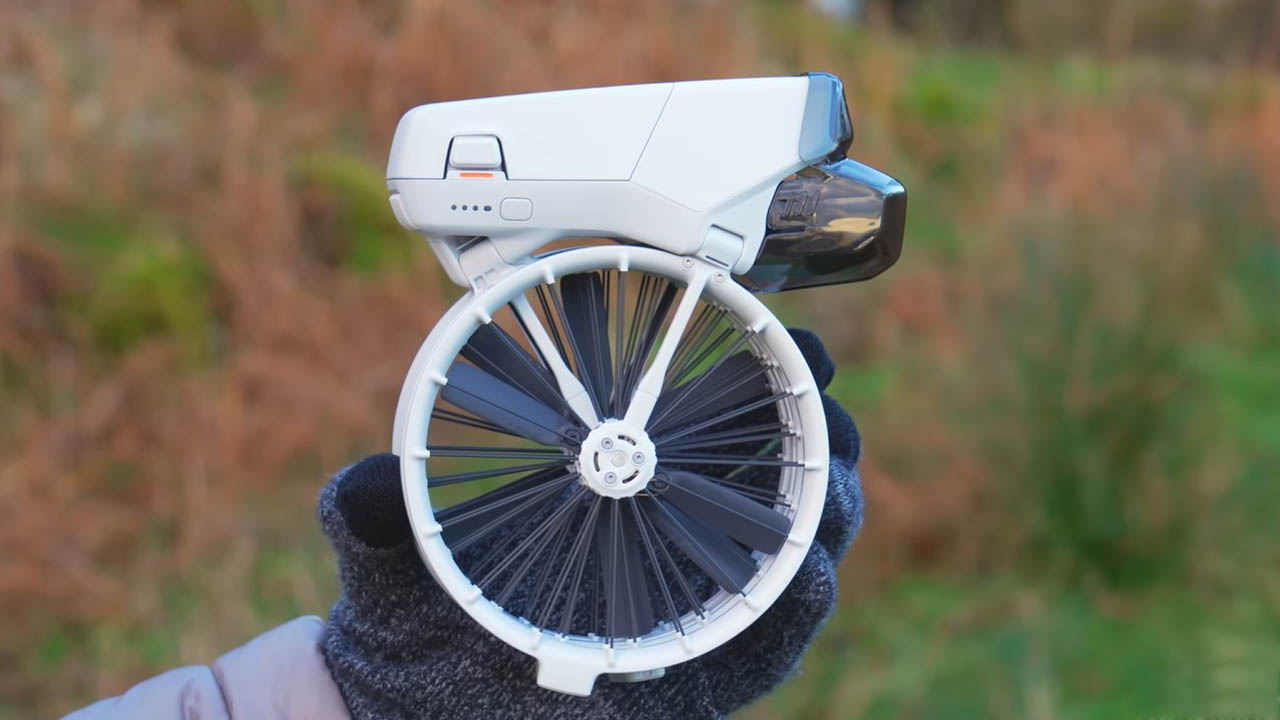
The DJI Flip introduces a bold new direction in drone design, moving away from DJI’s traditional folding style to something truly unique. Instead of the usual propeller arms, the Flip features enclosed propeller guards that fold out from the airframe—front guards first, then the rear. This innovative design not only enhances safety but also integrates practical features like fixed short legs on the front guards to elevate the drone when on the ground.
Despite its regulator-friendly sub-250g weight, the Flip is larger than DJI’s Mini models when folded and takes up considerably more space when unfolded. Its folded dimensions are a compact 5.35 x 2.44 x 6.5 inches (136 x 62 x 165mm), but it expands to a substantial 9.17 x 11 x 3.11 inches (233 x 280 x 79mm) when unfolded. Notably, unfolding the Flip powers it on automatically, making it essential to remove the gimbal protector beforehand.
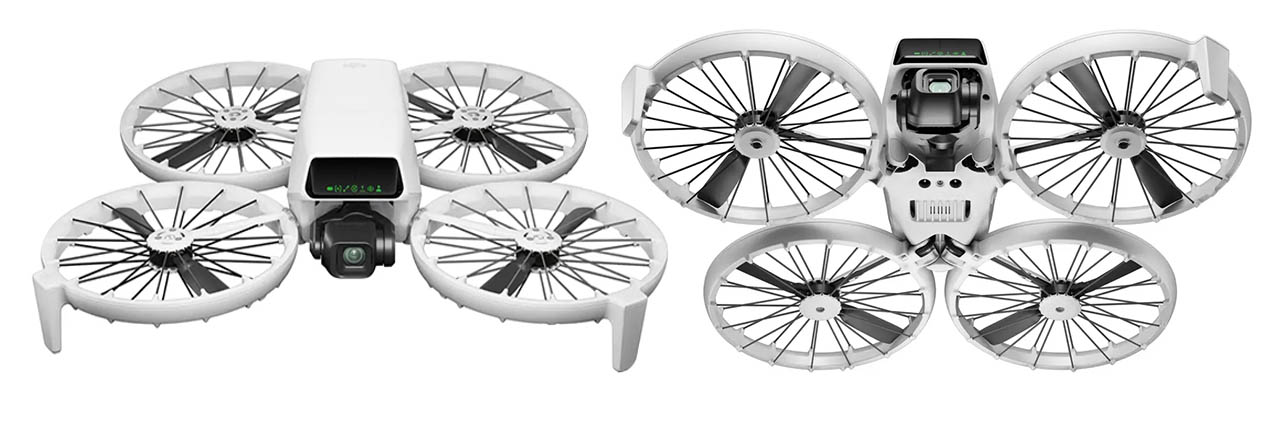
The propeller guards are crafted with polycarbonate edges and lightweight yet durable carbon fiber string reinforcements. This clever combination ensures safety during close-proximity flights and enables convenient palm take-offs and landings. No landing mat is required, making the Flip ideal for use almost anywhere within legal and safe flight zones.
The airframe is notably taller than typical drones in this category and is equipped with a 3D infrared sensor above the gimbal. A black plastic panel on the front conveniently displays the currently active intelligent shooting mode, a feature especially handy when operating the drone without the DJI Fly app or a controller. Switching between modes is effortless, thanks to a mode button on the side of the drone, which provides audio cues to confirm the selection.
The Flip offers multiple flight control options: intelligent app-free modes, voice commands, and traditional controllers. It’s compatible with both the DJI RC-N3 and the DJI RC 2 smart controller. While both controllers deliver excellent performance, the DJI RC 2 stands out with its built-in 5.5-inch display, eliminating the need to connect a smartphone and offering a more streamlined experience.
DJI Flip: Features and Performance
The Flip drone offers a lot of exciting features but comes with a few caveats when it comes to flying in windy conditions. Unfortunately, it doesn’t fare well against strong gusts, and even a moderate headwind can significantly slow it down. While the specs didn’t specify the maximum wind resistance before launch, this could be due to its propeller design or the propeller guards, which may not be optimized for wind resistance. However, despite this, the Flip can still reach a respectable maximum speed of 27mph when in Sport Mode, which is pretty solid for most scenarios. For slower, more controlled flights, the Cine and Normal modes are great options, especially for video capture where smoothness is key.
When used as a traditional camera drone, flying with one of the two available controllers is generally smooth, aside from the wind issues. It’s not as nimble or quick as DJI’s Mini 3 or Mini 4 Pro, but the controls are familiar, and it remains user-friendly. One standout feature is the ability to take off and land from the palm of your hand or from the ground, which makes for a very convenient flying experience, especially in tight spaces.
Marketed as a vlogging drone, the Flip shines when it comes to capturing content, particularly selfies. While it shares this functionality with the DJI Neo, its vlogging capabilities are more robust, thanks to the inclusion of audio capture via the DJI Fly app. This allows you to record your voice while shooting video. For even better sound quality, you can connect the DJI Mic to your smartphone. Notably, the Flip does a great job of minimizing propeller noise, ensuring that the audio remains clean and clear during your shoots.
In terms of flight modes, the Flip is packed with intelligent options that can enhance your filming experience. It includes Follow, Dronie, Circle, Rocket, Spotlight, and Helix modes, which are perfect for dynamic shots. Additionally, there’s Manual Control, allowing for a more hands-on flying experience with on-screen controls. If you prefer using a traditional controller, you’ll have access to Quickshots like Dronie, Circle, Rocket, Spotlight, Helix, and Boomerang. These modes are intuitive and perfect for creating professional-looking footage without much effort.
One of the Flip’s most impressive features is its AI-powered subject tracking. Using ActiveTrack 4.0, Spotlight 2.0, and Point of Interest 3.0, it can keep the subject centered in the frame, even when moving through complex environments. The 3D Infrared Sensing System enhances this feature, helping the drone navigate tricky spaces and avoid obstacles with ease.
Safety and ease of use are further improved with the 3D Infrared Sensing System, which provides forward-facing sensors for limited collision avoidance. This system is especially helpful when using the Return to Home feature, as it shows the planned route on the controller’s screen as a green overlay, ensuring a safe return to base. DJI also claims that this system makes flying safer during nighttime operations, offering more peace of mind during low-light shoots.
The Flip also packs some solid extras, like Hyperlapse capabilities, offering Free, Circle, Course Lock, and Waypoint modes to create stunning time-lapse videos. You can shoot hyperlapses in up to 4K horizontally or 2.7K vertically. For panoramic shots, it includes a basic panorama mode, though manual panoramas typically produce better results.
Fast charging is another bonus, with the ability to charge two batteries at once using the charging hub. Data transfer speeds are impressive, with up to 30MB/s when moving photos and videos to your phone via the DJI Fly app. Plus, you can plug the drone directly into your computer through USB-C to transfer data from its internal storage or microSD card, even without turning the drone on.
DJI Flip: Image and Video Quality
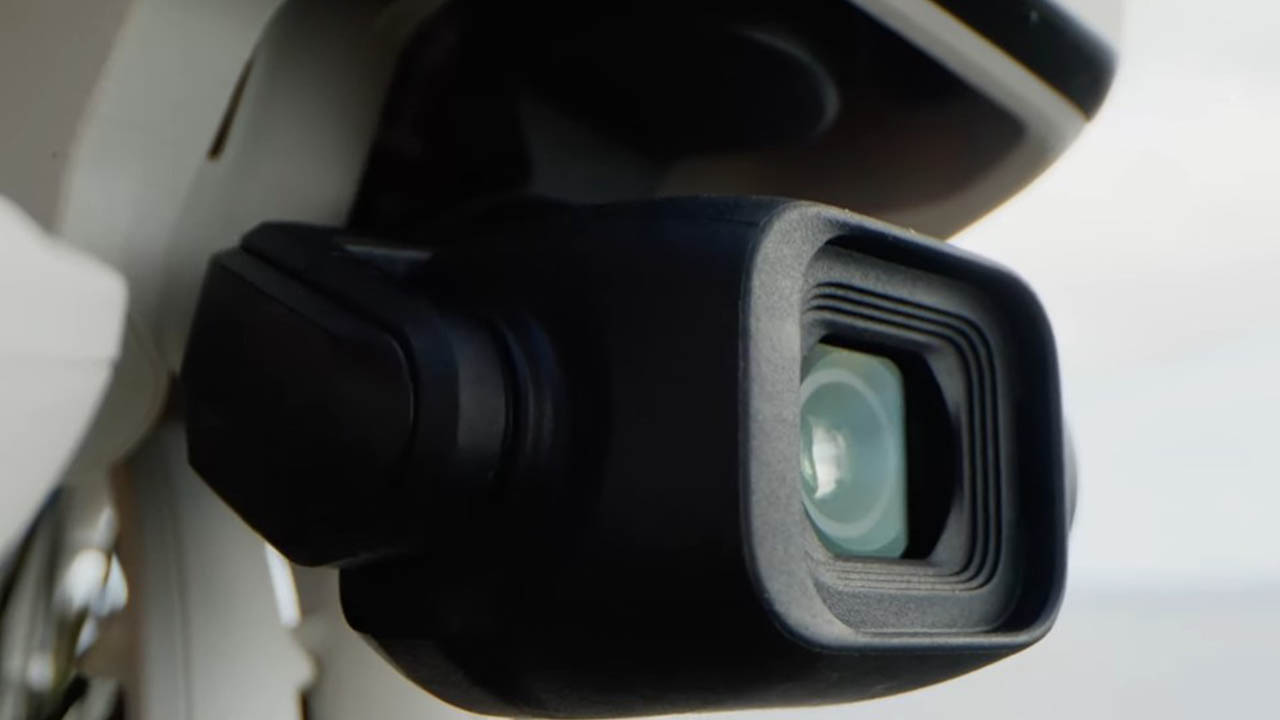
The Flip drone packs a solid set of features, particularly in the camera department, though it’s clear that it’s tailored for beginners and vloggers rather than professional filmmakers or photographers. At its core is a 1/1.3-inch Quad Bayer 4-in-1 sensor capable of capturing 12MP and 48MP raw and JPEG photos. This sensor, combined with Dual Native ISO Integration, enables improved performance in low-light conditions. The large pixels and 24mm equivalent focal length with a fixed aperture deliver good image quality, though with notable limitations.
One of the Flip’s standout features is its 3-axis mechanical gimbal, ensuring smooth footage even during motion-heavy flights. Video capabilities are impressive for its class, with 4K video recording available at up to 60fps. Slow-motion enthusiasts will appreciate the ability to shoot 4K video at 100fps and 1080p at the same high frame rate. Additionally, vertical video capture is possible at 1080p and 2.7K resolutions at 30fps. However, this vertical video is cropped from the horizontal sensor, unlike models like the DJI Mini 3 and Mini 4 Pro, which offer a physical camera rotation for portrait orientation. While this might feel limiting, it still aligns with the needs of social media creators who prioritize vertical formats.
When it comes to image quality, the Flip performs adequately but doesn’t quite match the sharpness and detail of higher-tier drones like the DJI Mini 3 or Mini 4 Pro. Images tend to be sharpest at the center, with noticeable softness toward the edges. There’s also a slight murkiness in photos and videos, though this could partially be due to the prerelease version of the DJI Fly app and firmware used during testing. It’s unlikely that post-release software will drastically change the image quality, but it’s worth noting for early adopters.
Despite these limitations, the Flip caters well to beginners and casual vloggers. For those who prefer a straightforward shooting experience, the Normal color profile produces pleasing out-of-camera results. Meanwhile, more advanced users can explore the 10-bit D-Log M flat profile, which provides a broader dynamic range and greater flexibility for color grading in post-production. The maximum bitrate for video capture is 150Mbps, ensuring detailed footage, especially when paired with the flat profile.
Photo enthusiasts will appreciate the ability to shoot in raw for maximum editing flexibility or stick with JPEG for convenience. Compared to its sibling, the DJI Neo, the Flip delivers superior photo and video capabilities while retaining the same ease of use and beginner-friendly features.
Overall, the Flip strikes a balance between simplicity and advanced options, making it an appealing choice for newcomers and vloggers who value convenience and creative flexibility.
Battery Life and Flight time
A major difference between the DJI Neo and the DJI Flip is flight time. While the Neo could only manage a modest 17-minute flight with propeller guards attached, the Flip offers an impressive 31-minute flight time when using the remote controller. Of course, real-world conditions such as wind and faster flight modes can reduce this figure significantly, but even with these variables, a potential 31 minutes in the air is a huge step up. This extended flight time provides users with more opportunities to capture photos and videos without frequent battery changes.
For those who want to maximize their flying sessions, opting for the Fly More combo is a smart investment. It includes two additional batteries and the newly introduced Parallel Charging Hub, which can charge two batteries at the same time. This feature not only cuts down charging time but also allows for nearly 90 minutes of flight when all three batteries are fully charged.
Charging the battery directly via USB-C takes approximately 75 minutes, but using the Parallel Charging Hub reduces this time to just 45 minutes per battery. For those needing on-the-go power, DJI’s portable power stations, such as the DJI Power 500, enable simultaneous charging and flying, making the Flip even more versatile for travel enthusiasts and content creators.
Should I Buy The DJI Flip?
Buy it if…
You’d like multiple control options
With the ability to fly the drone without the app, with the app, or with one of two controllers, the Flip is perfect for both vlogging/selfie use and as a camera drone.
You’re a drone beginner
The intelligent flight modes, which make subject tracking easy and effective, combined with the Flip’s camera drone capabilities, make it a solid choice for newbies in the drone world.
You’d like palm take-off and landing
Thanks to its design, including the propeller guards, the Flip can take off and land right from your palm—an awesome feature for flying in tight spots or messy areas like mud.
Don’t buy it if…
You’d like superior image quality
The Flip delivers good image quality, but it’s not top-tier. If you’re after stunning images on a budget, the DJI Mini 3 outshines the Flip and even offers extra features like a rotating camera.
You don’t require subject tracking
If you don’t plan on using the intelligent flight modes, there are better DJI drones at a similar or even lower price, offering better overall flight performance than the Flip.
You’d prefer a first-person view
While the Flip may look like an FPV drone, it’s not. If you’re after immersive FPV video, check out the DJI Avata 2—whether you’re a beginner or an expert, it’s built for FPV action.
Verdict
If you’ve made it this far (and didn’t just jump to the end), you’ll know how impressed I am with the DJI Flip. This drone isn’t just an upgrade from the Neo—it’s a game-changer in the beginner drone market. Its intelligent AI features, enhanced subject tracking, large sensor, and diverse autonomous flight modes set it apart from most entry-level drones. The extended 31-minute battery life further enhances its appeal, allowing for longer, more immersive flying experiences.
For those who liked the Neo but wished for more versatility and power, the Flip is the perfect answer. Surprisingly, it remains reasonably priced despite offering significant improvements in imaging quality and flight performance.
That said, the Flip doesn’t render the Neo irrelevant. DJI has cleverly positioned both drones for different audiences—while the Neo remains a solid budget option, the Flip is a superior choice for beginners seeking premium features at an excellent value.
You Also Consider
DJI Mini 3 offers excellent 4K video recording and vertical shooting capabilities, similar to the Flip. However, it doesn’t include the same AI-driven subject tracking or the safety-focused propeller guards that make the Flip unique. This makes the Mini 3 a solid middle-ground option for those prioritizing portability and image quality over advanced AI features.
DJI Neo is a strong competitor with its large sensor and impressive 4K camera, providing excellent image quality. It also boasts obstacle avoidance, which enhances safety during flights. However, it comes at a higher price point and lacks the seamless DJI Fly app experience, which makes the Flip more appealing for beginners due to its user-friendly interface and smooth control options.
DJI Mini 4 Pro offers advanced obstacle avoidance through its omnidirectional sensors and pro-level features, including an extended flight range. While it delivers superior performance, its higher price and complex features may feel overwhelming for complete beginners, making the Flip a more approachable and cost-effective choice for new pilots.

